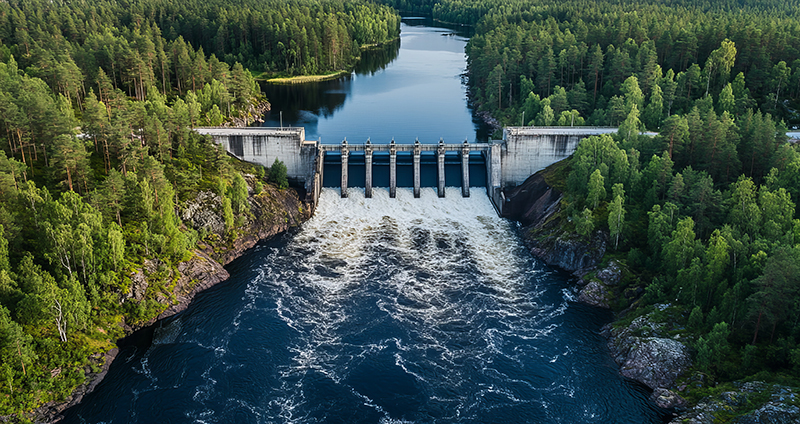Licentiate presentation Martina Nobilo

With the increase of electricity production from renewable energy sources, a problem of imbalance of the electric grid due to their intermittency has emerged. Hydropower can operate with variable loads and, therefore, mitigate the intermittency of other sources, which would require flexible and fast-responsive operation of the hydropower plant and its turbines. Hydro turbines have been designed to operate most of their lifetime at their best efficiency point (BEP). The flexible operation requires spending more time in transients and off-design operating conditions. This can cause the shortening of the lifetime of hydro turbines. In this thesis, numerical simulations on a Kaplan turbine model are used to perform analyses of flow during BEP and part load (PL) operating conditions, and a load reduction sequence.
The focus is on the flow-induced forces and moments on the turbine runner and its blades, which can be used in the lifetime analysis of the turbine.
The extracted loads on the runner showed different oscillation patterns during the load reduction sequence, which were attributed to rotor-stator interactions during BEP and, additionally, the rotation of the rotating vortex rope (RVR) at PL.
The non-axisymmetry of the horizontal forces was discovered and investigated in later analyses. The loads were also extracted on a runner blade with respect to the local rotating coordinate system using a developed function object. It was shown that RVR effect varies between the forces in different directions. Pressure in the runner’s and guide vane’s domain was analyzed to gain a more detailed insight into the flow behavior during load reduction sequence.
It was concluded that the influence of runner blades on pressure pulsations at the probes is reduced with increasing distance from the runner, but that the impact of RVR on pressure pulsations remains strong throughout the entire domain. Furthermore, the flow structures in the draft tube during the load reduction sequence were analyzed using both λ2 iso-surfaces and the evolution of velocity components. The extracted loads and performed analyses of the flow contribute to the future fatigue lifetime analysis, which is the primary objective of this project’s continuation.
Title: Flow-induced loads in a Kaplan turbine – towards fatigue damage lifetime analysis
Respondent: Martina Nobilo
Discussion leader: Carl-Maikel Högström Vattenfall AB
Examiner: Rickard Bensow
Main supervisor: Håkan Nilsson
Co-supervisor: Saeed Salehi
Time: August 26, 13.15-15.30
Find the thesis and the (published) appended papers at:
https://research.chalmers.se/publication/547698
Join the Licentiate presentation
Link Teams
Meeting ID: 384 307 304 478 9
Passcode: np6UK2Mp